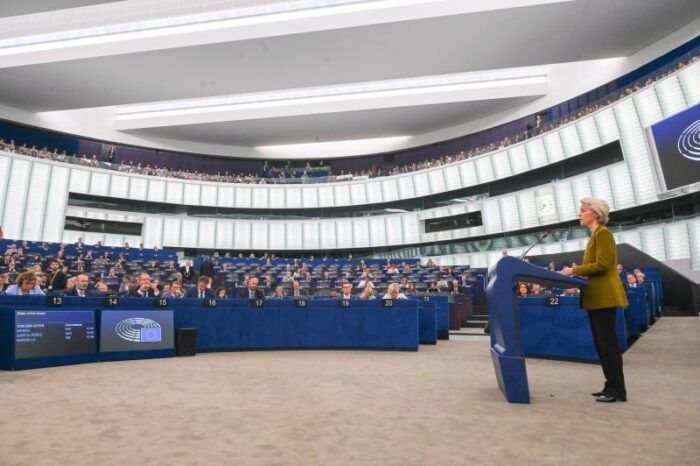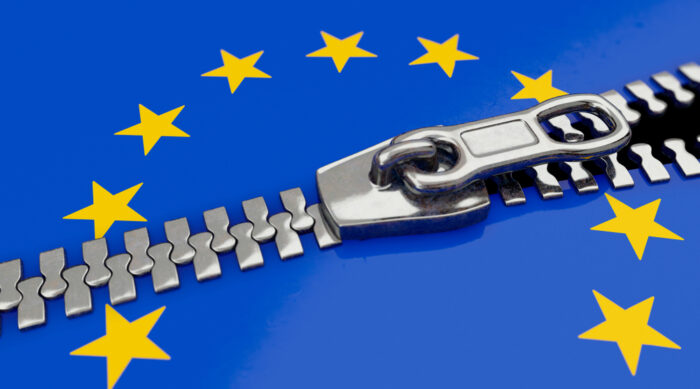The Progressive Post
The war-price spiral

The combination of an economic downturn and rapidly rising inflation is a new experience for most Europeans. The Covid-19 pandemic and the Russia-Ukraine war produced unprecedented disruptions, or as economists would say: a shock on both the supply and demand sides. And, as the holiday season kicked in, a forceful tightening of monetary policy signalled that a new chapter has begun. The interpretation of this move is critical for defining the direction of progressive policy action.
The central banks of the major economies have decided to drive the world economy into a coordinated global recession. This manoeuvre assumes – most explicitly stated by the head of the Fed, the central bank of the US – that the crawling, and in some cases galloping, inflation can only be pushed back by the good old method: cooling down the economy even if that creates more unemployment. In their opinion, a delayed action would be even more costly since high inflation would eat itself into the expectations of both businesses and households, and the devilish wage-price spiral would kick in.
The treatment of inflation should not be seen through a purely technocratic lens. Essentially, this is the biggest decision of income policy, ensuring that the costs of the post-pandemic and war-related disruption will be borne by the wage earners as opposed to savers or corporations. Central banks today act as a trade union of the rentier class, and they can do so mostly because of the novelty and the complexity of the situation, which makes its understanding much harder.
The simplest explanation for the double drama that is floated points to the negative supply shock of the pandemic period, which, at the same time, saw generous income support schemes being rolled out. This narrative is apparently built on real-life experience. However, the problem with this explanation is that it is wrong. The main supply shock actually took place two years ago, and the income support schemes were also mainly implemented in 2020. Delays and lags are, of course, part of the economic mechanism, but in this case, the gap between the alleged cause and the consequence is suspiciously wide.
In other words, the references to the return of the wage-price spiral are bogus. The problem is not that organised labour would be too strong, but the opposite: corporations that might have suffered losses during the pandemic recession are now using their market power to regain profitability. Regarding price setting, disruption of supply changes and uncertainty stemming from deglobalisation are also factored in. Contrary to the mantra of the last two years, we are actually ‘building back worse’. This is even more true if we consider the economic consequences of the war in Ukraine.
The price of war
History shows a clear connection between inflation and war. The worst hyperinflations occurred after world wars (in Germany in 1921-23 and in Hungary in 1945-46). The first oil price shock of the 1970s followed the Yom Kippur war, and the United Kingdom today is experiencing a rate of inflation that was last seen after the Falklands war.
Why wars lead to inflation in more general terms is not that hard to comprehend. The state must drive economic activities towards military objectives, which means producing goods for neither consumption nor investment but for destruction (or stockpiling). In times of war, market economies introduce price regulations, and face the risk of shortages and the need for rationing basic goods. Expectations also matter, and this has been the case since February this year when Vladimir Putin pressed the button to launch the invasion of Ukraine.
To show strength and solidarity, Europe, from the very start of the war, presented a great determination to engage in the fight, and expectations have been managed towards an ‘endless war’ which will potentially lead to decapacitating Russia and making it unable to invade its smaller or greater neighbours again in the future. Such messages change the strategies of households as well as businesses. Speculation begins on small and large scales. The hoarding of goods is a natural reaction. Thanks to large-scale financialisation, the effects can quickly be visible in a multiplied manner, disconnected from the actual volumes of supply and demand on the markets. A part of the additional hike in oil prices is explained by the need to purchase oil through ‘third countries’ like India, which remained open to trading with Russia despite the aggression, while the cautious approach of the US and its allies do not exclude India from world market circulation.
Hence, the post-pandemic recovery would be inflationary in any case, but the war tops up the consumer price index in all countries. In Poland, economists estimate that without the war, the inflation rate would be about 8-9 per cent, but that it almost doubled to 13 per cent by the ‘Putin effect’. In Estonia, one of the most belligerent countries of the EU’s Eastern periphery, the inflation rate has reached as high as 23 per cent. But the reason for speaking about a ‘war-price spiral’ is not only that the war adds substantially to inflation, but the latter also raises the risk of further international conflict. Especially in a stagflationary situation, rising prices push the misery index upwards. In some political cultures, the instinctive reaction of politicians is to look for a theatre of action abroad where power can be displayed, even if it may lead to avoidable clashes.
The current combined crises cause a greater inflationary kick for those for whom food and energy represent a greater share of total consumption. This autumn is bound to bring a slide to a social crisis for the poorer social groups and the poorer countries. This is potentially the greatest organised drop in European living standards the current generations have seen (except for the East European transitions in the early 1990s). Those who thought last spring that enduring 19 degrees in their homes instead of 21, and taking slightly cooler showers, will be all it takes in inconvenience for Western citizens to help Ukraine win over Russia will have to think again.
Progressive answers
In the economic policy toolkit, the textbook reaction of fiscal policy to slumps and monetary policy to inflation certainly does not work. If fiscal policy is used to cut taxes, it just gives an excuse for monetary policy to raise the interest rate further and thus deepen the recession. If monetary policy only casually raises the interest rate, it also increases the likelihood of bankruptcies and poverty, inviting government intervention and spending on consolidation and relief. One may call it the ‘fiscal-monetary doom loop’. This is not the right cure in the circumstances of stagflation, aggravated by deepening economic warfare, which, in many countries, generates price inflation and contraction of the real economy at the same time (shrinkflation).
If policy is to address the causes and not only the consequences of the crisis, it has to rein into the profit burden. This is possible through imposing price caps and windfall taxes on sectors where the circumstances and market power appear as sources of shareholder revenue. UN secretary general António Guterres has recommended a windfall tax on energy companies which are currently pocketing extra profits. In the long run, a stronger competition policy is needed against excessive market power, but this is most definitely not a short-term fix. And, if the problem is proven to be structural and not only temporary, nationalisation (in energy, water, and similar network industries) as an option cannot be abandoned either.
However, when more and more people face the risk of food and energy poverty, the first task is the reinforcement of social safety nets. Just as the pandemic was the trigger for various minimum income schemes two years ago, the current crisis might be the one that creates momentum for universal basic services. These can take various forms and apply to varying circles of society. Ideally, they should not only cover the poorest, but also those parts of the working and middle classes who do not yet experience the greatest hardships, but who are confronted with the risk of hardship if reserves run out, or if further shocks or adjustments hit.
Governments, cooperatives, and civil society organisations have to work together to provide in-kind support for those at great risk of poverty and the most deprived. There are many examples of this: free school meals and textbooks for children. The monthly rail pass at a symbolic price that Germany has tested is another example of social innovation, which, at the same time, encourages a more climate-friendly way to travel. For similar reasons, the mayor of Budapest made public transport free for children under 14 during the pandemic, and the current crisis may be the time for spreading and widening such schemes.
Much of the actions listed (fair taxation, price regulation, extending social services etc.) apply at the national level. But the EU, too, can play its part. The stagflation should trigger an initiative to add a second safety net after the successful roll-out of SURE, the EU programme to finance short-term employment schemes across the bloc and to keep people in jobs during the Covid-19 pandemic. Since the nature of the recession is different, as it is expected to be more structural than the one that occurred in spring 2020, short-time work arrangements are less helpful. This is the time to fulfil the commitment to a genuine European unemployment reinsurance.Finally, the EU can also reconsider the strategy of economic warfare. On sanctions, governments should have the opportunity to regularly review what works and what does not, and weed out those proven to be counterproductive. Withdrawing natural gas, but if possible, the entire energy question from the economic warfare is in the interest of Europeans. Peace-sceptics must be told that war is not only a military issue but also an economic one, with massive social consequences.
Photo credits: Shutterstock.com/ Trong Guyen




